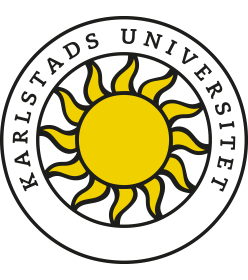Geographical Informations Systems I
7.5 ECTS creditsThe course includes both theoretical and practical components in the form of course reading and exercises that are assessed in the form of hand-in assignments. The course is divided into three parts: theory, exercises, and a project.
The course covers central concepts and definitions. Lectures and course reading are supplemented with an introduction to common GIS software, including introductory exercises and tasks using the software designed to help students deepen their knowledge and apply it in practice. The course also covers functions and areas of use for advanced vector-based GIS. In addition, the course focuses on spatial information in databases as well as data quality with regard to accuracy and resolution. Students learn about the structure of geographic data in various formats, data editing, analyses, and how to present results. Students are also introduced to ongoing processes of development and standardisation in the field.
An important aim of the course is for students to develop an understanding of the role of geographic information today and the available infrastructure for geographic information, such as:
Finally, students undertake a project in which they apply the theoretical knowledge acquired. Students complete a group project in which they investigate how a government agency of their choice works with sustainable development and GIS, and relate the results to the sustainability goals (Agenda 2030 environmental goals) for which the government agency is responsible. Those goals must also be described in the project.
The course covers central concepts and definitions. Lectures and course reading are supplemented with an introduction to common GIS software, including introductory exercises and tasks using the software designed to help students deepen their knowledge and apply it in practice. The course also covers functions and areas of use for advanced vector-based GIS. In addition, the course focuses on spatial information in databases as well as data quality with regard to accuracy and resolution. Students learn about the structure of geographic data in various formats, data editing, analyses, and how to present results. Students are also introduced to ongoing processes of development and standardisation in the field.
An important aim of the course is for students to develop an understanding of the role of geographic information today and the available infrastructure for geographic information, such as:
- institutional frameworks (such as legislation)
- standards, specifications, and guidelines for using geographic data
- regulations pertaining to the basic geographic data needed in society
- technological infrastructure
- research, development, and education
Finally, students undertake a project in which they apply the theoretical knowledge acquired. Students complete a group project in which they investigate how a government agency of their choice works with sustainable development and GIS, and relate the results to the sustainability goals (Agenda 2030 environmental goals) for which the government agency is responsible. Those goals must also be described in the project.
Progressive specialisation:
G1F (has less than 60 credits in first‐cycle course/s as entry requirements)
Education level:
Undergraduate level
Admission requirements:
3 ECTS credits completed in Introduction to GIS and Cartography, 7.5 ECTS credits, or equivalent
Selection:
Selection is usually based on your grade point average from upper secondary school or the number of credit points from previous university studies, or both.
This course is included in the following programme
- Programme in Surveying and Mapping (studied during year 1)
More information
Choose occasion
Campus, 50%
Options
- Start Spring 2026
- Mode of study Campus
- Language Swedish and English
- Course code NGGA23
- Application code KAU-48859
- Study pace 50% (Day)
- Study period week 4–13
- Schedule Show
- Introductory Information Show
- Reading list Show
